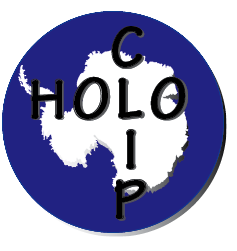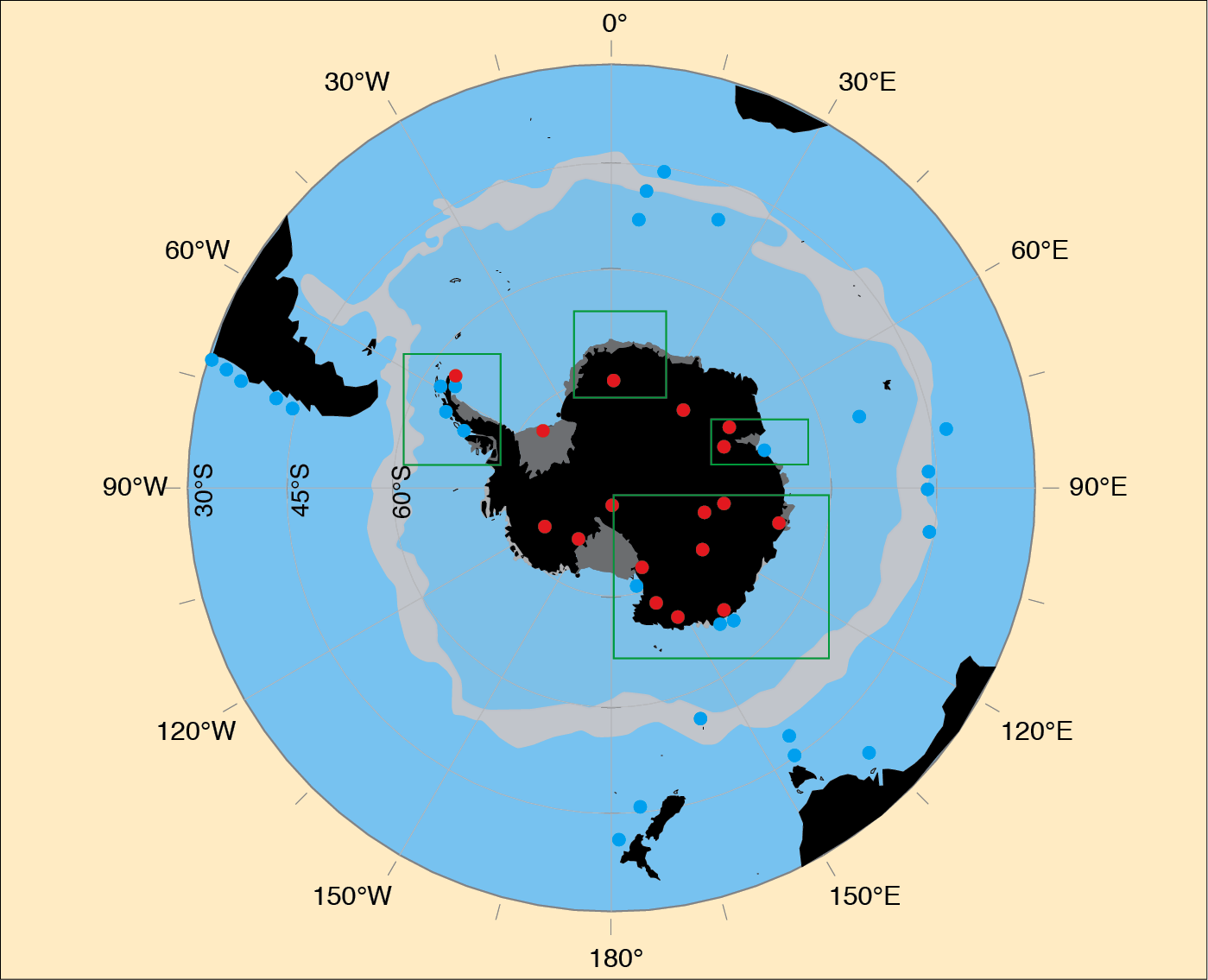- Home
- Publications
- PAGES Magazine
- Holocene Climate Variability At High-southern Latitudes: An Integrated Perspective (HOLOCLIP)
Holocene climate variability at high-southern latitudes: An integrated perspective (HOLOCLIP)
Barbara Stenni, X. Crosta, H. Oerter, C. Escutia Dotti, H. Renssen, H. Goosse, J. Pike and R.B. Dunbar
Past Global Changes Magazine
19(1)
37
2011
 |
Barbara Stenni1, X. Crosta2, H. Oerter3, C. Escutia Dotti4, H. Renssen5, H. Goosse6, J. Pike7 and R.B. Dunbar8
1Department of Geosciences, University of Trieste, Italy; stenni units.it
units.it
2UMR-CNRS 5805 EPOC, University of Bordeaux 1, Talence, France
3AWI, Bremerhaven, Germany
4Instituto Andaluz de Ciencias de la Tierra, CSIC-University of Granada, Spain
5Faculty of Earth and Life Sciences, VU University, Amsterdam, Netherlands
6Institut d’Astronomie et de Géophysique G. Lemaître, Université catholique de Louvain, Louvain-la-Neuve, Belgium
7School of Earth and Ocean Sciences, Cardiff University, United Kingdom
8Environmental Earth System Science, Stanford University, USA
HOLOCLIP kick-off meeting , Université Pierre et Marie Curie, Paris, 29-30 June 2010
Southern Hemisphere (SH) high-latitudes are challenging places to document and understand the mechanisms of natural climate variability: (1) the regional climate response involves complex and poorly documented interactions involving all the components of the climate system; (2) temperature changes are amplified compared to low latitude environments; and (3) Antarctica and its surroundings are characterized by a strong regional variability. These regional differences are obvious during the recent instrumental period, which depicts a large warming over western Antarctica during the last 50 years while no clear trends were observed for other Antarctic regions. Regional differences have also been highlighted over the course of the Holocene from geological and glacial records, supported by model experiments.
In the framework of the European Science Foundation (ESF) PolarCLIMATE program (http://www.esf.org/research-areas/polar-sciences/polarclimate.html), HOLOCLIP aims to bring together the ice core, marine sediment core and modeling communities to study the processes linking the different components of the climate system and linking the climatic response to the external forcing over the Holocene. Key areas of the Antarctic Ice Sheet and their marine surroundings have been selected (Fig. 1).
The objectives of this Joint Research Project are multiple and can be grouped as follows:
1. To validate and calibrate our proxies through investigation of the modern systems, to improve understanding of the tools that we currently use for climatic reconstructions.
2. To document changes in the different components of the Holocene climate system in terms of amplitudes, frequencies and timing, using a multi-proxy approach.
3. To document the regional heterogeneity of the different climate components over the Holocene by investigating several marine cores from the Antarctic continental margin and ice cores from the ice sheet and integrating the results in climate models via assimilation techniques.
4. To evaluate relationships between the different components / parameters, through a detailed comparison of marine and ice-core records, to better document the interactions among atmosphere-cryosphere-ocean.
5. To quantify the main forcing factors and to detect the regional climate sensitivity to these forcings.
6. To document the feedbacks between different system components.
LOCEAN (Laboratoire d’Océanographie et du Climat: Expérimentation et Approches Numériques) at University Pierre and Marie Curie, hosted the HOLOCLIP kick-off meeting. Nineteen scientists from the ice core, sediment core and climate modeling communities gathered to discuss available data, plan activities and coordinate the scientific teams for the next year.
Each project partner presented their main contribution to HOLOCLIP to provide an overview of the available data and the plans for new data to be obtained (Fig. 1). Climate modelers presented the model (LOVECLIM) that will be used to perform transient and snapshot simulations.
The actions to be performed before the end of the first year of the project are:
- Laboratory measurements on ice and sediment cores to produce additional high-resolution data sets.
- The compilation of a database hosted on the project website (www.holoclip.org) to facilitate a number of synthesis
products.
- Data synthesis of Antarctic temperatures, sea-surface temperatures and sea ice cover at five time slices (8, 6, 4, 2, 0 ka BP). Data synthesis will serve as a ground truth for climate model evaluation and data assimilation.
- Exchange of samples among partners (both modern and fossil) to achieve the best calibration and paleo-reconstructions possible.
- Exchange of young scientists among partners for training.
ESF-HOLOCLIP is funded by national contributions from Italy, France, Germany, Spain, The Netherlands, Belgium and the United Kingdom, with Stanford University as an associated partner.
